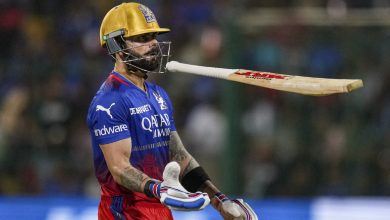Field manipulation, fearless batting, copybook technique: Tilak Varma makes big impression on India debut | Cricket News

Tilak Varma had already walloped three sixes before he regered his first four – an exquisite dissection of short third man and backward point – during his India debut against West Indies on Thursday. For reasons beyond that, this one stroke left former West Indies quick Ian Bishop calling for a gathering. Like Mark Antony from Shakespeare’s Julius Caesar, he used his supremo status as the voice even the mob would hear.
And so, he addressed us on air as we lent him our ears. “What I’d want you all to see, whether you’re watching in the Caribbean or back in India, is that there was a deep third at the boundary for that last ball (when the six was hit over long-off). He came up as the mid-off went back for this delivery.” And just like that, we understood it all. Tilak Varma was ambitious and how.
So much of the talk after all those IPL knocks and in the lead up to the series, even from Varma, had been around his bat swing. “My childhood coach had told me I had good bat swing,” he revealed to JioCinema, recalling the X-factor in early playing days that kept him and those around him optimic over a future in the sport. On Thursday, the subtle art of field manipulation came out. It had during his IPL riches as well.
Flip the pages back to that unbeaten 84 off 46 he notched against the Royal Challengers Bangalore in his first IPL outing this year. In the 10th over at the Chinnaswamy, RCB shifted to an off side-heavy boundary guarding after Varma resorted to reverse sweep on the first ball of the over. Five deliveries later, he danced down the track to tonk one over the now vacated long-on boundary. A demonstration of the tactical nature of hitting in contemporary cricket, that is often subjected to blind ‘bat swing’. As it was the other day.
Takes a blinder.Hits back to back sixes to kick off his innings.A dashing debut for Tilak Varma 😎#INDvWIAdFreeonFanCode #WIvIND pic.twitter.com/VpcKOyfMSR
— FanCode (@FanCode) August 3, 2023
The shot in the first T20I itself had to be played a certain way for the resulting boundary. The previous delivery – clamped for six – had been a slower one in the same region; outside off and full. If there was one thing the next ball wasn’t going to be, was a slower one. And it wasn’t. That meant less time.
From what little he had left, the southpaw had to ensure that he opened the face of the blade late to not give early ideas to the fielders stationed inside the circle while still timing it well to go all the way. And then, of course, Varma had to ensure that he found the gap between Obed McCoy and Brandon King. All of which, he did. That the ball didn’t meet the absolute middle of the bat could be forgiven. For it did do so on several other occasions on the day. Right from the first set of runs he scored.
Textbook pull
It was quick – 143 kph – from Alzarri Joseph. That first ball to Tilak Varma, his second in international cricket. And it offered only the slightest of room outside off stump. It didn’t matter. The time and space were enough to put Varma’s bat swing to test as he got off the mark with a maximum. A feat his non-striker had glorified a couple years back against the seething pace of Jofra Archer.
Suryakumar Yadav getting off the mark in international cricket with a six was a glowing endorsement for Indian cricket’s golden child – the IPL – for the fearless nature of batting talent that it developed. Now it was Varma’s turn. Not one, but two sixes came, one after another. And while playing the second, he furthermore ticked all the boxes on how to play a textbook pull shot.
Former Australia opener Matthew Hayden, who knows a thing or two about playing the pull shot, had shared the details on the biomechanics of the pull shot as he watched Travis Head dish a few to India in the WTC Final.
“It’s the backfoot,” Hayden emphasized on-air. “The front leg up in the air gives you the counter balance to be able to rotate your bat. Pull shot is really all about getting into a stable position. A controlled position.”
About that, in his exploits off Alzarri Joseph, there were signs of monk-like controlled position when Varma had played that first shot – a stand-still bat swing. A quick shift of the weight on the back foot, which rested on his toes while his front leg laid back on its heel.
When the time came to play the pull there needed to be “absolute commitment to the back foot for the swivel across”, as prescribed Hayden. “When you are playing it, that front foot needs to be elevated.” Cut to the scene on Thursday.
Varma goes deep inside his crease, anticipating a short-length delivery from Joseph after being hit for a six It came even quicker, a change from 143 to 145. To ensure Joseph doesn’t have an angular advantage over him, Varma moves across his stumps a little. The weight is shifted on the back foot as he swivels across to play the pull shot on one leg followed a nonchalant pause of the pose; to watch the ball sail over the deep square-leg fence.
This, in his debut showcasing in Indian colors, at 20. Captain Hardik Pandya wasn’t wrong in singing praises of a bright future following a defeat. “Not a bad way to start off your international career with a couple of sixes. There’s confidence and fearlessness that they (also Mukesh Kumar) have. They are going to do wonders for India.”







